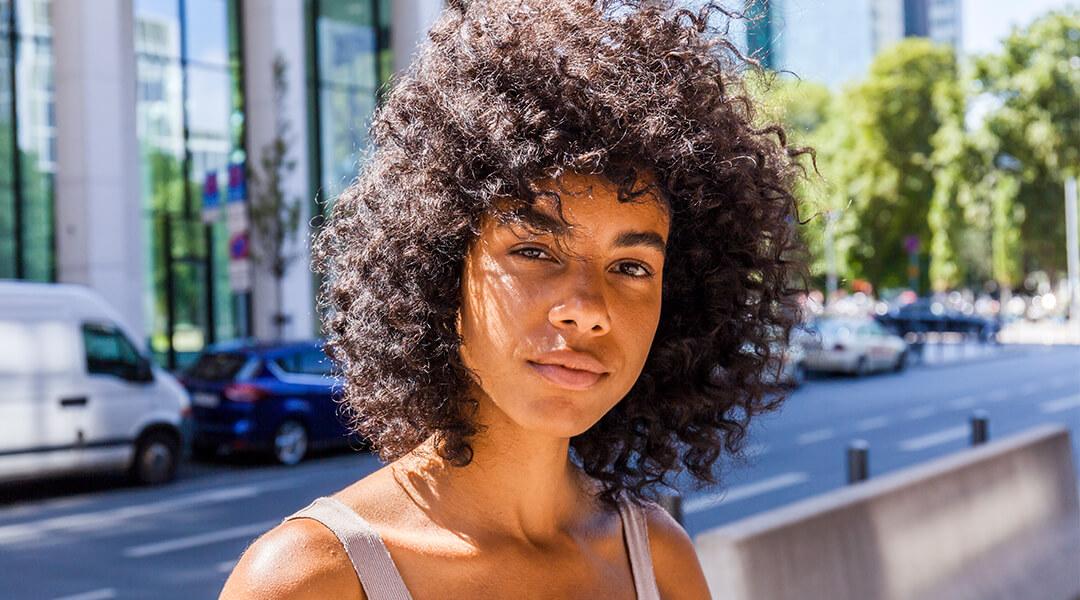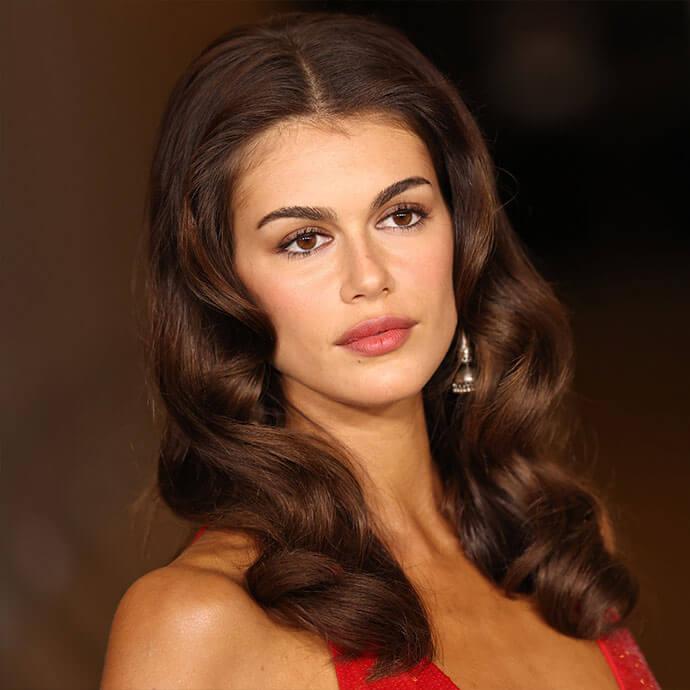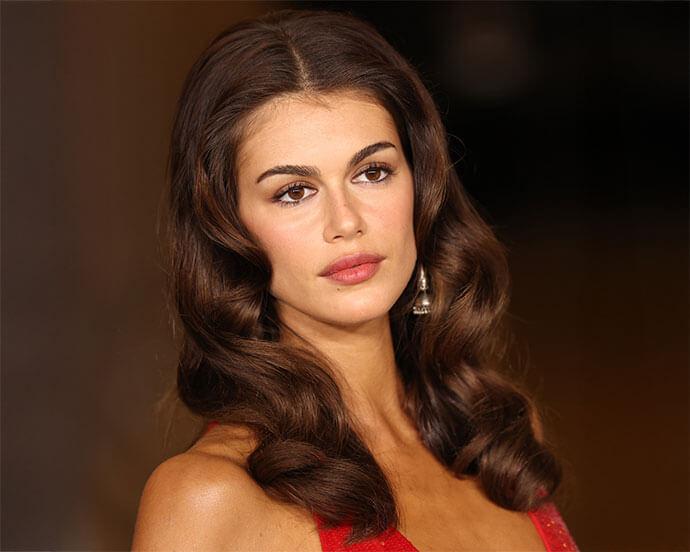6 Ways to Go Through the Natural Hair Journey With Ease



Elizabeth Denton


Ready to return to your natural hair? You’ve come to the right place. These tips are for those who want to forgo the big chop (yes, the big, big chop) but still go back to natural hair that’s free from relaxers and all those straightening chemicals. The good news is that it’s possible to get back to natural without the cut—but it will take time and patience. Not to worry, though, because we’re here to help (and we’re not doing it alone!). We chatted with Annagjid "Kee" Taylor, a celebrity hairstylist and natural-hair YouTuber with more than 870,000 subscribers. Kee knows a thing or two about natural hair and has helped her clients grow their hair and feel confident and beautiful at the same time.
We’ll go through everything you need to know while transitioning to natural hair, including whether you should be getting regular trims, what products and tools to use on wash day, and protective styles to rock while your hair grows. “Going natural gives your hair a good break from the processing and stress, whether that be relaxers or smoothing treatments, hair color, or even regular manipulation with hot tools,” explains Kee. “Anytime you're putting your hair through a chemical process, it's going to stress your hair out and make it more prone to damage and breakage, frizz, lack of moisture—a whole host of problems.”
Ready to embark on this natural-hair journey? It may take time, but when you make it to the end, you’ll know it was totally worth it.


It's about glam time you treated yourself.
MEET THE EXPERT
Annagjid "Kee" Taylor is a celebrity hairstylist and natural-hair YouTuber.
1. Be selective about your hairstyles.
It might sound like a lot of work to plan out your hairstyles in advance, but the right protective style will be your BFF through even the most annoying parts of this transition process. Choosing your hairstyles is a big part of how to transition to natural hair. And then if you want to do the big chop, go for it! “For those who are really ready for it, you can always go for the big chop, but most people don't want to do that,” admits Kee. “I have yet to have a client who was ready for that big of a chop!” What exactly is this “big chop,” you may be wondering? Well, it’s basically cutting off all the hair that has the chemical relaxer in it. That means you’ll probably have a pixie—at the longest. But hey, a shaved head and ultra-short hair are always chic, so if you feel confident, now would be the time to go bold.
If not, you’ll want to come up with a few easy hairstyles to rock throughout the transitioning months. This can include braids, twist out, bantu knots, cornrows, flat twists—the list goes on and on. It really depends on your skill level (or if you’ll be enlisting the help of a natural hair expert/hairstylist), your own texture, and your personal style, of course. Have some fun with it and enjoy the road to natural hair.
2. Get regular trims.
Yup, you read that correctly: Even when you’re trying to get that new growth, you still have to get regular haircuts. We know—this can be hard to hear when every new inch feels like success. But regular trims will ensure your hair is actually healthy. “Every time you go in for a trim, cut a little more than a typical trim,” explains Kee. “As you watch the natural curl pattern come back in, you'll notice that the new hair is stronger, and the line of demarcation starts to get weak.” Kee says this is typically the point when people are ready to go for a bigger cut. “If you're thinking about growing out your relaxer, it's important to find a stylist who you trust who specializes in this,” she adds.
Plus, she says, “Constant FaceTime with your stylist will help you transition to a natural style more smoothly.” Here you can ask any and all questions about your hair needs, including the right hair products, styling, and anything, really, about how to transition to natural hair. There are no silly questions during this natural hair journey.
3. Keep track of your hair care.
When you’re transitioning to natural hair, chances are you’re going to be doing a lot of experimenting to find the right hair products, tools, and styles that work well for you during the process. And you have a lot more going on in your life than just your hair, so to keep it all organized, grab a journal and track your journey. What day did you feel most confident about your hair? What protective style got you the most likes on Instagram? Okay, maybe that’s not the most important thing—but just jot down anything that’s working and not working during this time. You might learn a lot about your hair, and yourself, in the process.
It’s possible you’ll notice things about your hair that you might have missed. Did that extra moisture mask feel like it helped with breakage? Maybe your hair needed a little protein that week in the form of a leave-in conditioner. When’s the last time you got a trim? Note all of these things, as well as some questions for the next time you see your hairstylist. You’ll thank us.
4. Make sure you have the right tools.
It’s possible you’ll have to make a few purchases to ensure you have the right hair tools on hand while transitioning to natural hair. “You definitely want to keep a wide tooth comb on hand for detangling,” says Kee. She also loves a scalp soother to calm any itch without causing hair breakage. “A denman brush is also a must for perfecting wash and go styles,” she adds.
Hair care also counts as tools here. “You want to find the products that provide excellent moisture to your hair and deliver the results you want,” says Kee. I would recommend finding a good detangler [to use with] a wide tooth comb. Plus, everyone needs a good foam, a curl definer, a gel, an oil, and a shine for day to day looks.” Many of these you probably already have around, so get them all together in one place to make getting ready that much easier. It’s all about doing the small things to make this journey as painless as possible.
5. Lay off the heat.
One of the hardest parts of growing out relaxed hair is switching up your routine; specifically, the way you style your hair. It’s important to lay off heat styling as much as possible, and that means putting away the flat iron, blow dryer, straightening products and any other items that will cause more breakage in the long run. Once you see your natural hair growth, you’ll be glad you did.
6. Deep condition on the reg.
“Moisture is key!” says Kee. But there is no hard-and-fast rule about how often to use a deep conditioner or mask. “Everybody's different, so honestly there's no ‘one size fits all’ answer,” she says. “I usually recommend starting with once a week or every other week and building up from there. Your hair will let you know pretty quickly if you need to step it up!” Listen to your hair—it will tell you what it needs. Seeing a little more frizz? Your curly hair is likely craving moisture. Feeling especially brittle? Try a protein-enriched product. Just don’t overdo the protein, or you might cause breakage.
We love the BRIOGEO HAIR CARE Be Gentle, Be Kind Avocado + Kiwi Mega Moisture Mask. It gives your hair and your scalp (you can’t forget your scalp!) a dose of iron-rich spinach to help grow healthy hair. There’s also chia seed extract to add shine to any hair texture, as well as cocoa seed butter to lock in moisture and tame any frizz and flyaways. Because, as Kee says, “Natural hair is gorgeous, so rock it!”
Want in on all the IPSY Glam Bag fun? Take our Beauty Quiz now to get started. Already an Ipster? Refer your friends to earn points, which you can use toward products. Either way, don’t forget to check us out on Instagram and Twitter @IPSY.
Liked this post? Share!
Related Stories


Hair
6 Hair Trends Set to Take Over in 2026, From Bixie Cuts to Bouncy Blowouts
Published on Dec 5, 2025 • 5 min read


Hair
21 Easy Hairstyles to Enhance Your Natural Curls and Coils
Published on Dec 3, 2025 • 11 min read


Hair
The Ultimate Guide to Styling Short Hair
Published on Dec 1, 2025 • 11 min read


Hair
From Bangs to Blonde: The Hair Trends Taking Over 2025
Published on Dec 16, 2024 • 5 min read


Hair
Scalp Exfoliation Is the Key to Healthier Hair—Here’s How to Do It Correctly
Published on Nov 21, 2025 • 9 min read


Hair
The 10 Best Hair Masks and Conditioners to Promote Hair Growth
Published on Mar 11, 2024


Hair
20 Trendy Hairstyles That’ll Make You the Life of the (Holiday) Party
Published on Oct 15, 2025 • 9 min read


Hair
Easy Thanksgiving Hairstyles to Look Polished While You Feast
Published on Oct 2, 2025 • 6 min read


Beauty Picked Just for You
Get 5 products worth up to $70
Plus exclusive access to epic deals up to 80% off
Starting at just $14/month. Cancel anytime.